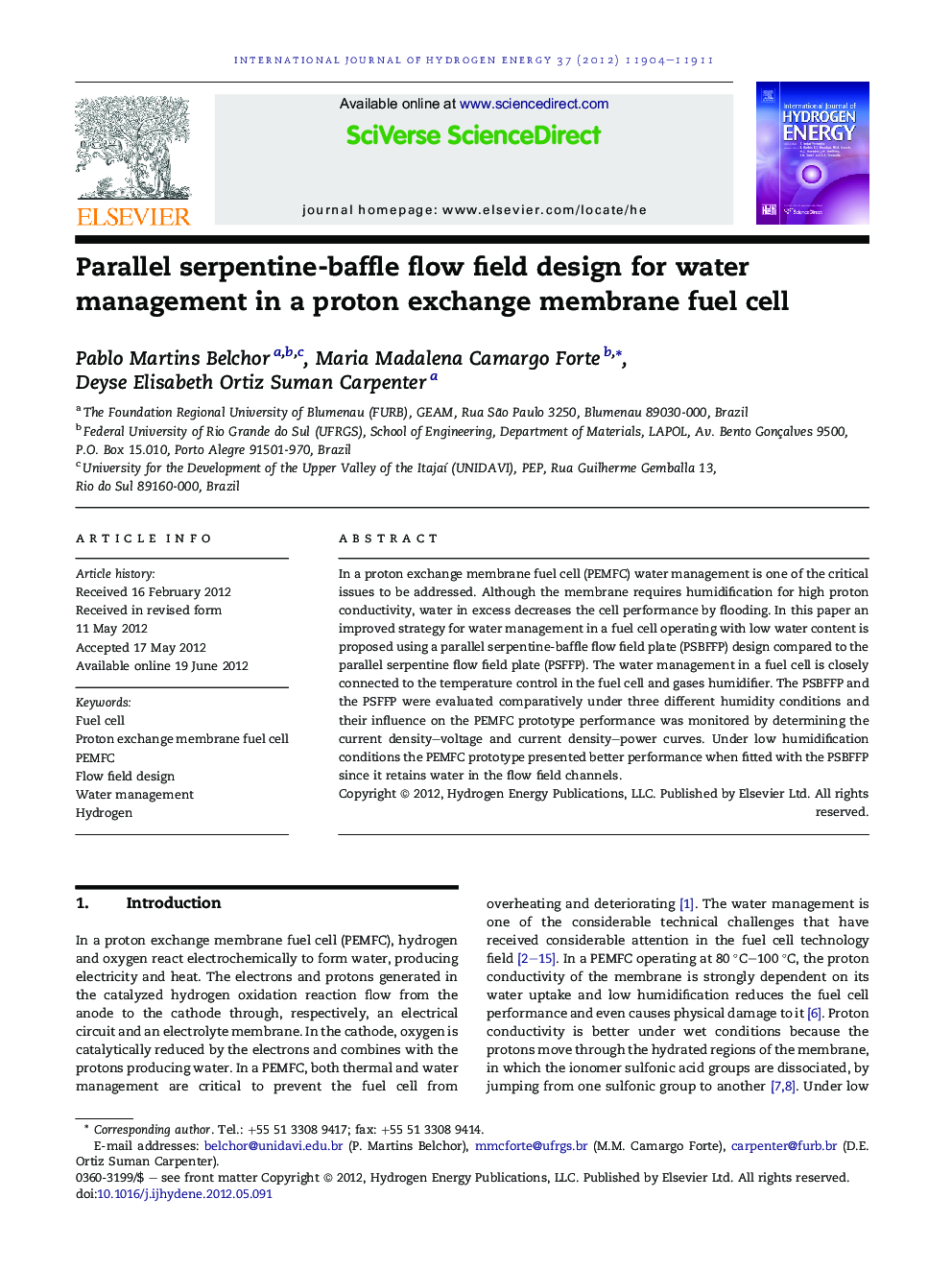| Article ID | Journal | Published Year | Pages | File Type |
|---|---|---|---|---|
| 1275059 | International Journal of Hydrogen Energy | 2012 | 8 Pages |
In a proton exchange membrane fuel cell (PEMFC) water management is one of the critical issues to be addressed. Although the membrane requires humidification for high proton conductivity, water in excess decreases the cell performance by flooding. In this paper an improved strategy for water management in a fuel cell operating with low water content is proposed using a parallel serpentine-baffle flow field plate (PSBFFP) design compared to the parallel serpentine flow field plate (PSFFP). The water management in a fuel cell is closely connected to the temperature control in the fuel cell and gases humidifier. The PSBFFP and the PSFFP were evaluated comparatively under three different humidity conditions and their influence on the PEMFC prototype performance was monitored by determining the current density–voltage and current density–power curves. Under low humidification conditions the PEMFC prototype presented better performance when fitted with the PSBFFP since it retains water in the flow field channels.
Graphical abstractParallel serpentine baffle flow field plate (PSBFFP) dimensionless drawing illustrated by applying Solidworks software.Figure optionsDownload full-size imageDownload as PowerPoint slideHighlights► A new parallel serpentine-baffle flow field (PSBFFP) configuration is proposed. ► The newly designed PSBFFP configuration prevents water loss from the channels. ► The PSBFFP under low humidification conditions showed better performance. ► The PSBFFP is potentially a more suitable plate for a fuel cell operating at 100 °C.
